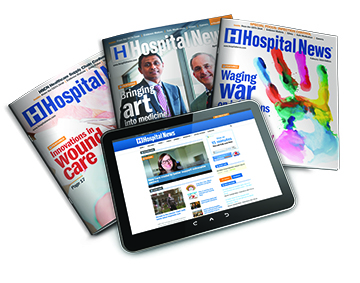The health care system in Ontario rarely functions as a seamless and coordinated service experience for patients. This is especially true for the high user segment of the population. Therefore, Health Links across Ontario face what can at times seem like an insurmountable challenge – how to simultaneously bend the curve of both outcomes and costs associated with high users. Yet, this challenge can and is being addressed in Chatham-Kent.
Under the leadership of Chatham-Kent Health Alliance (CKHA), the Chatham-Kent Health Link (CKHL) is changing the game for high users. In fact, today this group of providers boldly suggests that being a patient identified as a high user by the CKHL is actually an advantage.
That certainly was not the case a year ago when the system was fragmented and poorly coordinated. However, through innovation, collaboration, patient engagement and real accountability, the CKHL is seeing the patient’s journey transform within months.
MORE: GAME CHANGERS: TOP 10 HEALTH TECHNOLOGIES FOR 2015
“It seems so simple yet we’ve historically lacked the tools to turn data into knowledge and the collaboration framework to mobilize new, responsive approaches to care,” explains Nancy Snobelen, Co-Chair of the CKHL and Director of Partnerships & System Integration, CKHA. “The truth is that we didn’t understand that standardization is not the solution for high users, rather they require rapid, individualized responses for their frequent or intense system utilization. By addressing this issue rather than leveraging traditional care pathways, we get to the root of the problem and have the opportunity to truly affect change.”
Simply put, the local health care system is being turned on its head – it’s dynamic, exhilarating and inspiring. In Chatham-Kent, providers are re-envisioning how Ontario’s health care system can focus on the patient experience through measureable coordinated care.
Together, the 14 partner organizations are sharing responsibility to lead or support six different streams of activity that are shaping a new direction for service delivery across the continuum. The streams reflect six common problems the CKHL providers face:
- Notification to the Community Care Access Centre when one of their clients is hospitalized.
- Duplicate or absent medication reconciliation.
- Duplicate or unused community resources.
- Standardized and individualized clinical processes supported by best practice.
- Real-time patient identification, tracking and monitoring.
- Ownership for communication, care planning documentation and data sharing.
And impressively, they have implemented solutions to all six challenges. Through a combination of high tech and low tech solutions they now understand in real-time who and where the high user patients are as well as when and what they need. Admittedly, if the CKHL provided a list of its lessons learned, all the usual factors would be present so what made the difference for this community?
Matt Snyder, Chief Transformation Officer for TransForm Shared Service Organization, who was an integral part of the CKHL phase one journey offers this explanation, “The Chatham-Kent Health Link set out clear priorities, created foundational structures and built a legacy of beneficial technology solutions in its first phase, all of which were critical. But, more so than anywhere else, we’re seeing committed leadership at all levels and particularly, at the clinical adoption level.” The priority projects have positioned this community to leverage a set of dynamic tools, some of which are firsts in Ontario, which when couple with defined roles among providers with strong and lasting relationships has created impressive patient outcomes.
MORE: TELEMEDICINE CUTS TRAVEL TIME AND ENHANCES CARE
One dynamic tool that is setting the CKHL apart from its peers is the use of MediaMed’s Global Performance Solution or Med-GPS. This tool, which responds to the challenge of identification, tracking and monitoring of high user patients, combined with an innovative clinical process helps the group to identify and stratify patients in real-time. Moreover, it has turned existing data into real-time knowledge that allows the providers to quickly mobilize and adapt their care plans to meet the patients’ current or emerging needs. In one instance, the number of Emergency Department visits for one patient went from 35 down to 8 visits annually. A stunning 77 per cent decrease due to a more coordinated plan.
It has not been a straight road or an easy journey but it has been a critical lesson in what innovation looks and feels like to those leading change. A key lesson has been to expect and learn from failures along the way by being ready to continually implement small changes. “This is difficult in a health system and it’s easy to feel overwhelmed by the magnitude of the change required. So it’s been an evolution in learning to recognize that these lessons are powerful tools in reshaping our approach and achieving rapid results,” says Denise Waddick, Co-Chair CKHL and Executive Director of Thamesview Family Health Team. “This would not have been possible were it not for the stable partnerships in our community; without the collective desire to put agency interests aside and to fundamentally consider a new way forward for our patients. We believe that we are poised for the next level of collaboration. We have the right partners, the right tools, for the right patient care. Watch us; we will continue to put Chatham-Kent on the map as we move into our second phase of our Health Link journey.”




